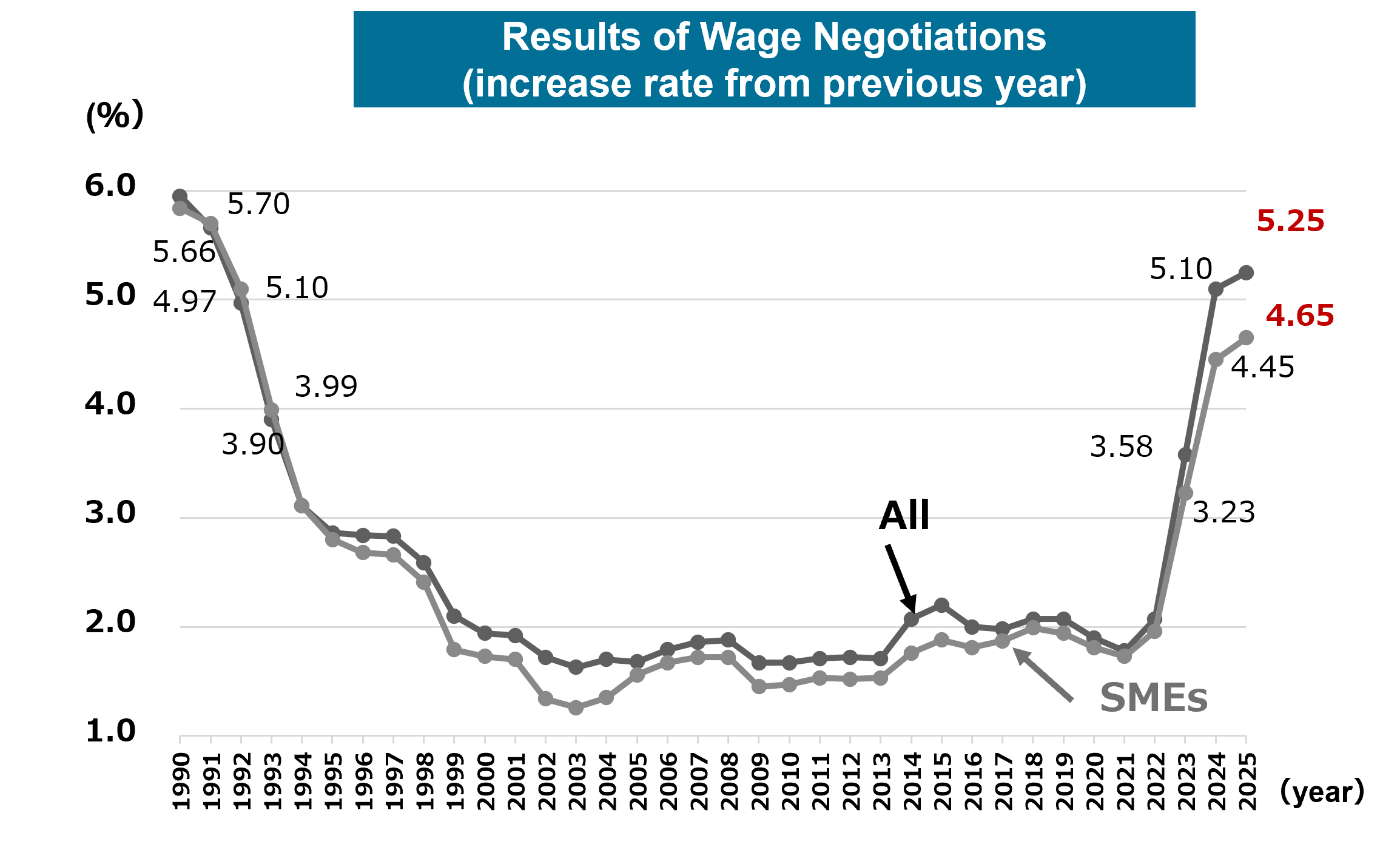- Home
- Policies
- METI Quick Reads
- Prospects for Sustained Wage Rises in Japan
Prospects for Sustained Wage Rises in Japan
- Key Points of the New Direction (1) -
The New Direction of Economic and Industrial Policies outlines the path toward a future Japan wherein individuals enjoy get well-being despite the declining population. June saw the release of the latest report for the New Direction, containing scenarios for sustainable growth up to 2040. This is a series of three articles outlining key points of the New Direction. In this first article, we look at whether the wages and pay on which our lives depend will continue to rise in the future.
Reasons why wage levels stagnated in Japan
Japan’s long-term deflation is a key factor in the failure of pay levels to rise over the last 30 years. If companies had created new and excellent products and services, It would have been difficult to set prices for them reflecting their true value. Instead, they focused their energies on cutting costs, including minimizing domestic personnel expenses. At the same time, they also concentrated on expanding their business globally and investing in overseas companies to boost their growth and turnover.
Pay levels are rising…
But at long last pay levels are beginning to shift upward. The annual spring labor-management negotiations reached their highest level in 33 years last year, and this year have continued to rise by over 5%.

But is it just down to higher costs of living?
At present, a key challenge is that the cost of living is rising at a rate greater than that of pay levels owing to soaring prices for resources and raw materials. At the same time, within commercial practices, the growing acceptance of price increases is helping to foster a social mindset recognizing that good products deserve a fair price. Companies are expected to pass such cost increases, including those for personnel, on to their prices.
How to ensure ongoing pay level rises
Proactive investment in new products, services, and businesses is the key to maintain this trend. Surveying pay levels and private-sector capital investment (domestic investment) of the major developed countries over the last 30 years indicates a correlation between increased domestic investment and rising pay levels. Japan was at an extremely low level for both of these compared to western nations. This is why the New Direction of Economic and Industrial Policies started in 2021 has adopted proactive industrial policies to build an end-to-end virtuous cycle of expanding domestic investment, accelerating innovation, and higher incomes for Japanese citizens. Domestic investment has in fact expanded throughout the country, with private-sector capital investment updating its highest-ever level for the first time in 30 years. This sea change affecting domestic investment and pay levels will lead to sustainable wage increases. Innovation of technology, business models, and more will also be crucial to this.

Division in Charge
Industrial Structure Policy Division
Ministry of Economy, Trade and Industry
Last updated:2025-11-07